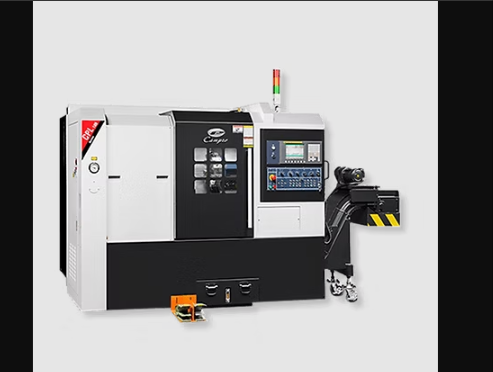In today’s competitive manufacturing industry, precision, speed, and efficiency are key to success. Modern machining operations have evolved from manual setups to automated solutions that enhance output and consistency. Among these advancements, the CNC turning center stands out as one of the most efficient and versatile tools for metalworking and component manufacturing. Designed for complex production needs, CNC turning centers have transformed the way industries handle shaping, cutting, and finishing processes.
Key Operational Advantages of CNC Turning Centers
CNC turning centers offer several advantages over traditional machines. Their automation, precision, and versatility have redefined efficiency across modern workshops. Here are the most significant benefits:
1. Enhanced Precision and Accuracy
One of the most notable benefits of using a CNC turning center is its unmatched precision. The computer-controlled system ensures that every cut and contour matches exact specifications. This eliminates human error and guarantees uniformity, even across thousands of identical parts. Advanced CNC controls also allow for complex geometries that are nearly impossible to achieve manually.
2. Increased Production Efficiency
CNC turning centers operate continuously with minimal supervision. Once programmed, they can run multiple shifts with consistent performance, significantly reducing downtime. Automatic tool changers and multi-axis capabilities allow for multiple processes to occur simultaneously, shortening production cycles and maximizing throughput.
3. Consistency and Repeatability
In high-volume manufacturing, repeatability is essential. CNC systems excel at producing identical components repeatedly without deviation. Every part adheres to the same measurements and tolerances, maintaining strict quality standards. This reliability is particularly valuable for industries where even minor variations can lead to major issues, such as aerospace or automotive manufacturing.
4. Reduced Labor Requirements
Traditional machining methods rely heavily on manual operation and supervision. With a CNC turning center, a single operator can manage multiple machines, greatly reducing labor costs. The automation of tool changes, feed rate adjustments, and precision cuts means operators can focus on programming and quality assurance rather than manual handling.
5. Time and Cost Savings
While the initial investment in a CNC turning center may seem high, the long-term savings are significant. Automated processes reduce waste material, minimize setup time, and optimize cutting efficiency. Fewer production errors mean less rework and scrap, ultimately lowering operational costs and improving profitability.
6. Versatility Across Materials and Designs
CNC turning centers can handle a wide range of materials, including steel, aluminum, brass, titanium, and high-performance plastics. Their ability to adapt to various cutting tools and operations allows manufacturers to switch between product types with minimal downtime. This flexibility supports diverse production needs, from small custom runs to mass production.
7. Improved Safety and Operator Comfort
Safety is a top priority in any machining environment. CNC turning centers feature enclosed designs that contain chips, debris, and coolant, reducing the risk of injury. Automation also keeps operators away from direct contact with rotating components and sharp tools, ensuring a safer workplace while improving comfort and efficiency.
8. Integration with Advanced Technology
Modern CNC turning centers integrate seamlessly with computer-aided design (CAD) and computer-aided manufacturing (CAM) software. This digital connection streamlines the design-to-production process, allowing manufacturers to make real-time adjustments and optimize machining parameters. Many systems also include smart monitoring features that track tool wear, machine performance, and production metrics, enabling predictive maintenance and reduced downtime.
Factors to Consider When Choosing a CNC Turning Center
When selecting a turning center, manufacturers should consider several factors:
- Size and capacity: Choose a model that matches your part dimensions and material requirements.
- Axis configuration: Multi-axis machines offer greater flexibility for complex parts.
- Control system: A user-friendly interface simplifies programming and reduces setup time.
- Automation compatibility: Look for options that support robotic loading, tool changers, and part conveyors.
- After-sales support: Ensure the supplier offers maintenance, training, and technical assistance.
Evaluating these aspects will help you select the ideal machine that fits your production goals and budget.
Why CNC Technology Is the Future of Manufacturing
The rise of CNC technology has revolutionized the way industries approach production. The demand for precision parts, shorter lead times, and higher efficiency continues to grow, making CNC turning centers indispensable. Their adaptability, speed, and reliability help businesses stay competitive in a rapidly advancing manufacturing landscape.
Choosing the right machining equipment can shape your company’s productivity and growth. Whether you’re expanding your capabilities or planning to buy CNC milling machine systems alongside turning centers, investing in advanced CNC technology ensures consistent quality, faster delivery, and long-term success.
